Welcome to our blog to help you with Heat wave gardening tips. In the scorching heat of summer, maintaining a healthy garden can be challenging. With temperatures soaring, plants can easily wilt and become stressed. However, with strategic planning and careful attention, you can protect your garden and help your plants thrive. Here are essential heat wave gardening tips to keep your garden flourishing.
1. Watering Techniques
Effective watering techniques are essential for maintaining a healthy garden, especially in a climate. Here’s an expanded guide on deep watering, drip irrigation, and mulching:
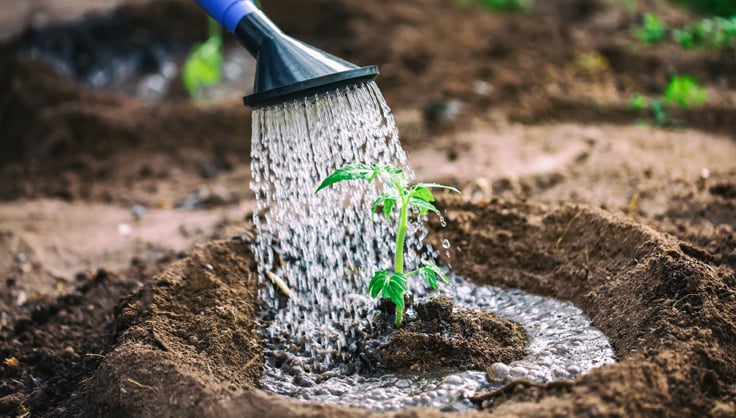
Deep Watering
Benefits:
- Encourages the development of deep, robust root systems.
- Enhances drought tolerance by promoting roots to grow deeper into the soil.
- Reduces the frequency of watering, conserving water over time.
Techniques:
- Frequency: Water less frequently but more thoroughly. Depending on the soil and plant types, aim for deep watering once or twice a week.
- Amount: Ensure that the water penetrates at least 6-8 inches deep into the soil. This typically requires 1-2 inches of water per session.
- Timing: Water early in the morning or late in the evening. This timing helps minimize water loss due to evaporation and allows plants to absorb water before the heat of the day.
- Method: Use a slow, steady stream of water. This can be achieved with a soaker hose, a drip system, or by letting a hose trickle slowly at the base of plants.
Drip Irrigation
Benefits:
- Delivers water directly to the plant roots, maximizing efficiency and minimizing waste.
- Reduces evaporation and runoff compared to overhead watering methods.
- Can be automated with timers, saving time and ensuring consistent watering.
Installation and Use:
- Setup: Install a drip irrigation system or soaker hoses around your plants. These systems consist of main lines connected to a water source with emitters or perforations to release water slowly.
- Emitters: Place emitters at the root zones of each plant. The rate of water flow can be adjusted to match the needs of different plants.
- Timers: Attach a timer to automate watering schedules. Set the timer to water early in the morning or late in the evening.
- Maintenance: Regularly inspect the system for clogs or leaks. Flush the lines periodically to maintain efficient water flow.
Mulching
Benefits:
- Helps retain soil moisture by reducing evaporation.
- Suppresses weed growth, which can compete with plants for water and nutrients.
- Regulates soil temperature, keeping it cooler in the summer and warmer in the winter.
- Adds organic matter to the soil as it decomposes, improving soil structure and fertility.
Application:
- Material: Use organic mulches like straw, wood chips, bark, compost, or shredded leaves. Inorganic options like gravel or pebbles are also effective, especially for decorative purposes.
- Depth: Apply a thick layer of mulch, about 3-4 inches deep, around your plants. This depth is optimal for moisture retention and temperature regulation.
- Placement: Spread mulch evenly around the base of plants, leaving a small gap around the stems or trunks to prevent rot and allow air circulation.
- Maintenance: Replenish mulch as needed to maintain the desired thickness. Decomposing organic mulch should be topped up regularly.
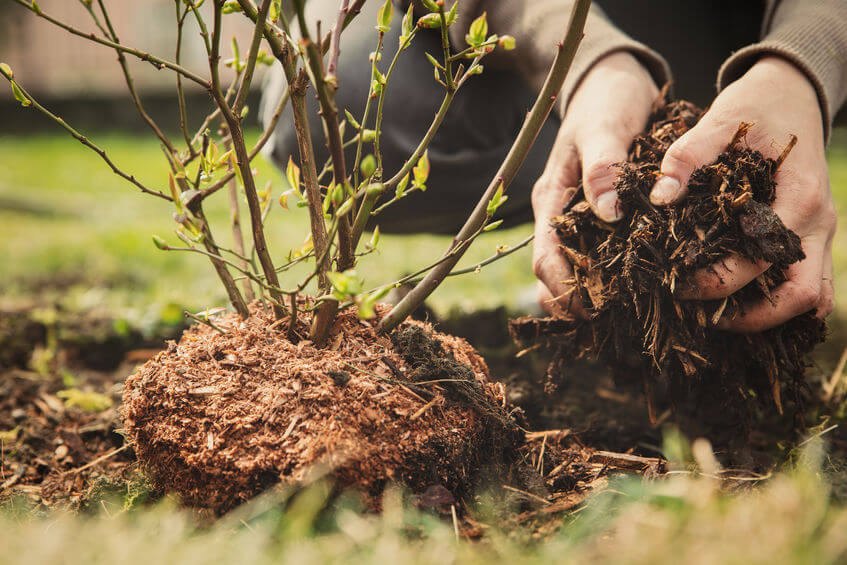
Additional Watering Tips
- Soil Moisture Monitoring:
- Regularly check soil moisture by inserting your finger or using a moisture meter. Water when the top 1-2 inches of soil feel dry.
- Ensure that different plants are grouped according to their water needs, known as hydrozoning, to optimize irrigation efficiency.
- Efficient Use of Water:
- Avoid overwatering, which can lead to root rot and other plant diseases. Ensure the soil has good drainage.
- Harvest rainwater using rain barrels to collect and store water for use during dry periods.
- Protecting Water Resources:
- Prevent runoff by applying water slowly and ensuring it is absorbed into the soil.
- Use contour planting or terracing to slow water flow and increase soil absorption, reducing erosion and water loss.
2. Shade Protection
Effective shade protection strategies are essential for protecting plants from the intense heat and sun. Here’s how to implement shade cloths, move containers, and use companion planting for natural shading:
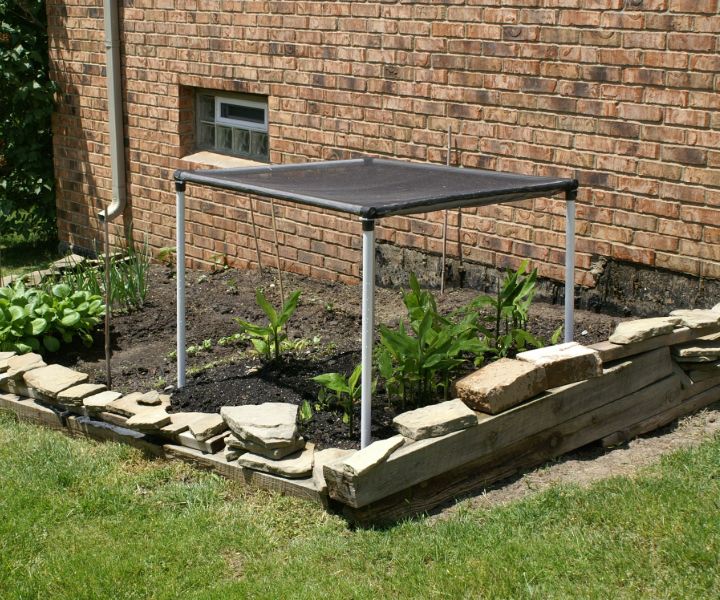
Shade Cloths
Benefits:
- Provides adjustable and temporary shade.
- Reduces heat stress on plants, preventing sunburn and dehydration.
- Available in different shade percentages to match the specific needs of your plants.
Techniques:
- Selecting Shade Cloths: Choose the appropriate shade percentage (e.g., 30%, 50%, 70%) based on the plant’s needs. For example, 30-50% shade cloths are suitable for vegetables and flowers, while higher percentages are ideal for delicate or shade-loving plants.
- Supports: Install shade cloths over garden beds or individual plants using stakes, hoops, or frames.
- Orientation: Position the shade cloth to block the harshest afternoon sun, typically from the west or southwest.
- Temporary Use: Use shade cloths during peak heat periods and remove them when temperatures moderate to allow plants full sun exposure.
Move Containers
Benefits:
- Allows flexibility in managing light exposure for container plants.
- Reduces heat stress and sun damage by relocating plants to shaded areas during peak heat.
Techniques:
- Choosing Locations: Identify shaded areas in your garden, such as under trees, along the north side of buildings, or in shaded patios.
- Daily Management: Move containers to shadier spots during the hottest part of the day, usually between 11 a.m. and 3 p.m.
- Using Mobile Solutions: Place containers on wheeled plant caddies or dollies for easy relocation.
Companion Planting
Benefits:
- Creates a natural shading system using taller plants or structures to protect more sensitive plants.
- Enhances biodiversity and can improve pest management and soil health.
Techniques:
- Tall Plants: Plant taller crops such as corn, sunflowers, or climbing beans to provide shade for lower-growing, shade-sensitive plants like lettuce or spinach.
- Structures: Use trellises, arbors, or pergolas to support climbing plants or vines, creating shaded areas underneath.
- Intercropping: Mix plants with different height profiles. For example, grow tomatoes or peppers alongside shorter crops that benefit from partial shade.
- Timing: Plan the planting schedule so that taller plants are established and providing shade by the time the sensitive plants need protection.
Additional Tips for Shade Protection
- Microclimates: Take advantage of microclimates in your garden. Observe areas that naturally receive more shade during different times of the day and use them for planting more vulnerable species.
- Reflective Mulch: Use light-colored or reflective mulches to reduce soil temperature and provide some cooling effect.
- Protective Covers: In addition to shade cloths, use row covers or garden fabric to protect young or sensitive plants from the sun and heat.
3. Soil Management
Soil management is crucial for maintaining healthy plants in your San Diego garden, especially considering the region’s climate. Here are key strategies for effective soil management focusing on organic matter and mulch renewal:
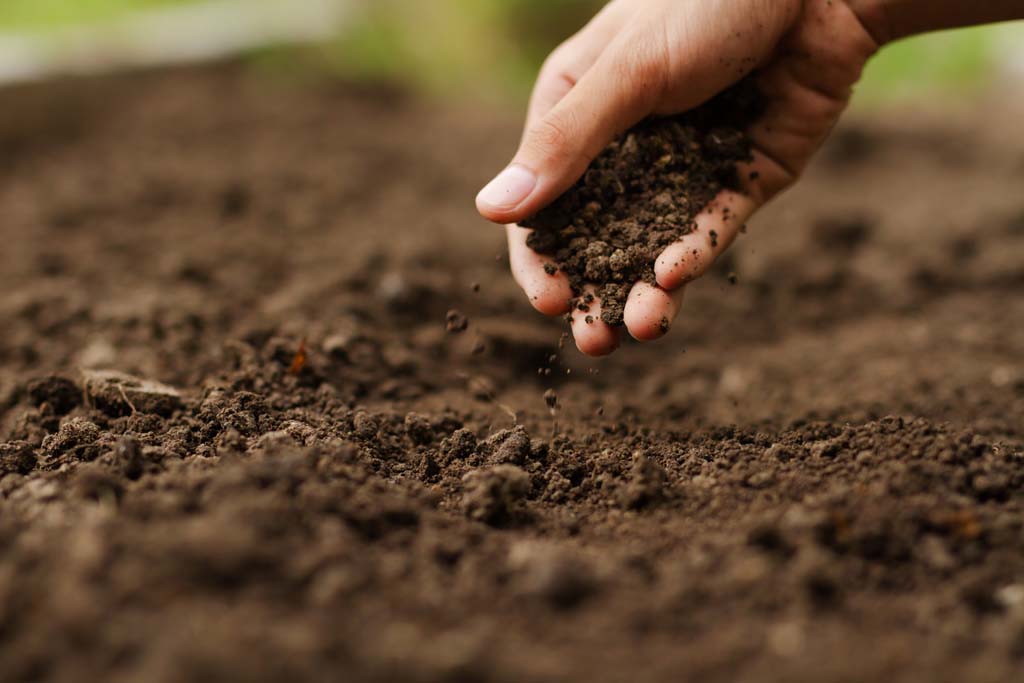
Organic Matter
Benefits:
- Improves soil structure and drainage.
- Enhances nutrient availability.
- Increases soil moisture retention.
- Supports beneficial soil organisms.
Incorporation Methods:
- Compost: Add compost made from kitchen scraps, yard waste, and plant trimmings. Apply a 1-2 inch layer and mix into the top 6-8 inches of soil.
- Manure: Use well-aged animal manure to provide nutrients and organic matter.
- Cover Crops: Plant cover crops like legumes and grasses during fallow periods to add organic matter when tilled into the soil.
Application Frequency:
- Regular Application: Apply organic matter annually, especially before planting new crops.
- Top Dressing: Add a layer of compost or mulch on the soil surface to maintain organic matter levels and protect soil structure.
Mulch Renewal
Benefits:
- Conserves soil moisture by reducing evaporation.
- Suppresses weed growth, reducing competition for water and nutrients.
- Insulates soil, moderating temperature extremes.
Renewal Techniques:
- Monitoring: Regularly check the depth and condition of mulch.
- Replenishment: Add a fresh layer of mulch (about 3-4 inches) as needed, typically once or twice a year.
- Seasonal Renewal: Apply mulch before the start of hot weather to prepare for summer heat and reduce water loss.
4. Plant Selection and Care
Selecting and caring for plants in a hot climate involves choosing heat-tolerant species, ensuring adequate hydration, and employing proper pruning techniques. Here’s a comprehensive guide on plant selection and care:

Plant Selection
Heat-Tolerant Plants:
- Succulents and Cacti: These plants store water in their leaves or stems, making them highly drought-resistant.
- Mediterranean Herbs: Examples include rosemary, lavender, thyme, and oregano, which thrive in hot, dry conditions.
- Native Plants: Choose plants native to Southern California, as they are adapted to the local climate and require less water once established.
Criteria for Selection:
- Water Needs: Select plants with low to moderate water requirements.
- Sun Exposure: Choose plants that match the sun exposure in your garden (full sun, partial shade).
- Soil Type: Consider plants that are suited to the soil type prevalent in your area (sandy, clay, etc.).
Plant Care
Hydrate Plants:
- Pre-heat Wave Hydration: Water deeply a day or two before a heat wave to ensure plants are well-hydrated. This helps them withstand high temperatures.
- Watering Frequency: Adjust watering frequency based on plant needs and weather conditions. Water deeply and less frequently to encourage deep root growth.
Pruning:
- Purpose: Prune to maintain plant health, control growth, and improve air circulation.
- Techniques:
- Light Pruning: Remove dead or damaged branches, spent flowers, and any overgrown foliage.
- Timing: Prune in early spring or late fall to avoid stressing plants during the hottest months.
- Tools: Use clean, sharp pruning shears to make clean cuts and minimize damage.
Additional Tips for Plant Care
- Mulching: Apply a thick layer (3-4 inches) of mulch around plants to retain soil moisture and regulate soil temperature.
- Fertilization: Use a balanced fertilizer sparingly to avoid promoting excessive growth that requires more water.
- Pest and Disease Management: Monitor plants regularly for pests and diseases. Use integrated pest management techniques to minimize chemical use.
Implementing Plant Selection and Care
Step-by-Step Plan:
- Research and Selection:
- Research and select plants that are well-suited to San Diego’s climate and your garden’s specific conditions.
- Consider grouping plants with similar water and sunlight needs together (hydrozoning).
- Planting:
- Prepare planting holes with amended soil and space plants according to their mature size.
- Water plants thoroughly after planting to reduce transplant shock.
- Maintenance:
- Monitor soil moisture regularly and adjust watering as needed.
- Check plants for signs of stress, pests, or diseases and take appropriate action.
- Seasonal Care:
- Prune plants lightly in early spring or late fall.
- Reapply mulch as needed to maintain a consistent layer.
5. Maintenance and Monitoring
Maintenance and monitoring are crucial aspects of gardening in San Diego, ensuring your plants remain healthy and resilient in the region’s hot and dry climate. Here’s how to effectively maintain and monitor your garden:

Maintenance
Regular Checks for Heat Stress:
- Signs to Monitor: Keep an eye out for signs of heat stress, such as wilting, curling leaves, or browning leaf edges.
- Timing: Check plants regularly, especially during heatwaves or periods of extended dryness.
- Prompt Action: If you notice signs of heat stress, water deeply and consider providing temporary shade using shade cloths or relocating potted plants to shadier spots.
Weeding:
- Importance: Weeds compete with your plants for water, nutrients, and sunlight.
- Methods:
- Hand-Pulling: Regularly inspect and remove weeds by hand, especially when they are small and easier to pull out.
- Mulching: Apply a thick layer of mulch around plants to suppress weed growth.
- Weed Control Fabric: Use weed control fabric in areas where you want to prevent weed growth without using chemicals.
Monitoring
Watering Needs:
- Check Soil Moisture: Use your finger or a moisture meter to check the soil moisture level.
- Watering Schedule: Adjust watering frequency based on plant needs and weather conditions. Water deeply and less frequently to encourage deep root growth.
Pest and Disease Management:
- Regular Inspection: Monitor plants for signs of pests (e.g., chewed leaves, holes) and diseases (e.g., mold, leaf spots).
- Integrated Pest Management (IPM): Use a combination of cultural, biological, and if necessary, chemical control methods to manage pests and diseases.
- Beneficial Insects: Encourage beneficial insects like ladybugs and lacewings, which naturally prey on garden pests.
Seasonal Maintenance Tasks
Spring:
- Pruning: Lightly prune plants to shape them and promote healthy growth.
- Fertilization: Apply a balanced fertilizer if needed, following package instructions.
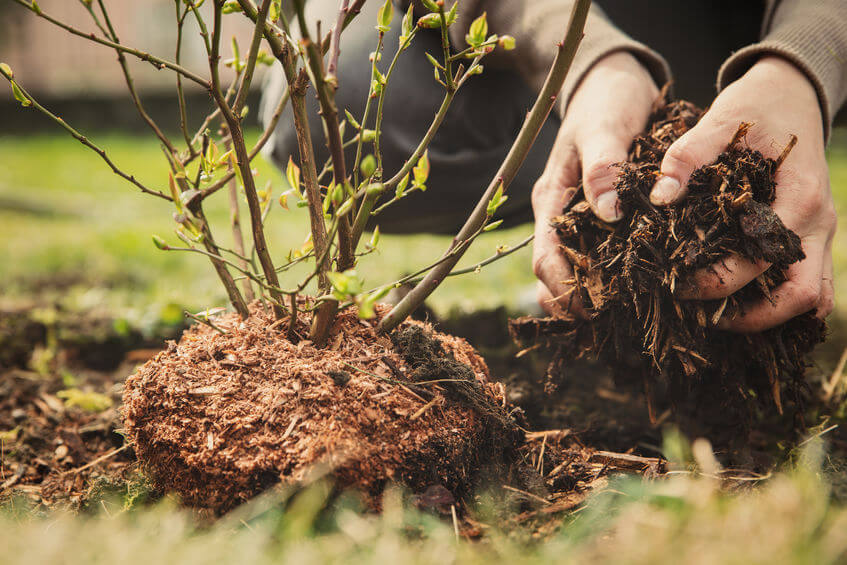
Summer:
- Water Management: Monitor soil moisture closely and adjust watering schedules as temperatures rise.
- Mulching: Replenish mulch to maintain a consistent layer and protect soil moisture.
Fall:
- Planting: Plant cool-season crops and native plants suitable for fall planting.
- Clean-Up: Remove spent plants and debris to reduce overwintering pests and diseases.
Winter:
- Pruning: Prune deciduous trees and shrubs to shape them and remove dead or diseased branches.
- Protection: Cover sensitive plants during frosty nights if needed.


